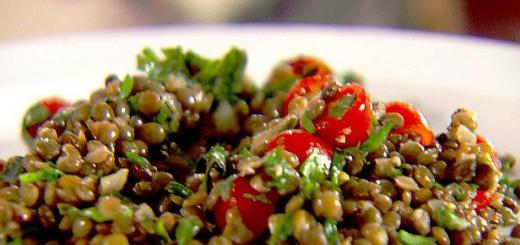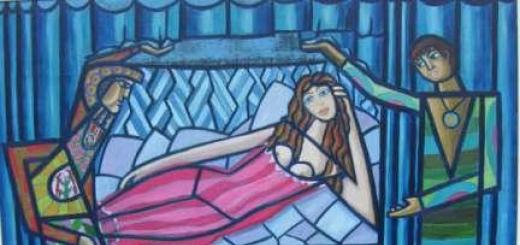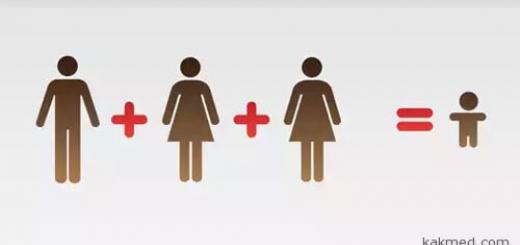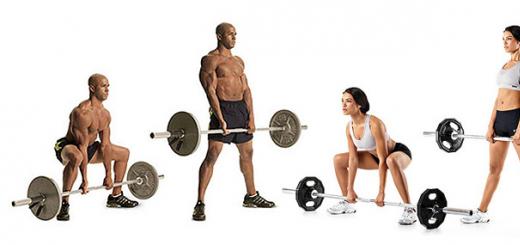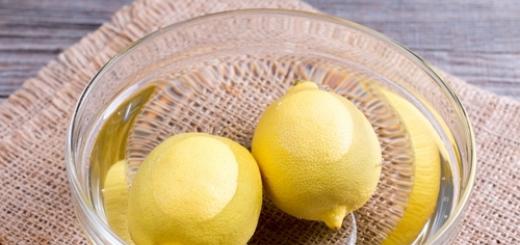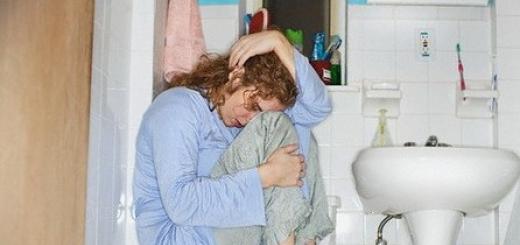The design of cast iron boilers for coal
Cast-iron sectional boilers with an outer sheathing made of sheet steel work on coal. Thermal insulation made of sheet asbestos is laid between the sections of the boiler.
Flue gases from the boiler have a high temperature (about 250-400 C), which drastically reduces the efficiency of the boiler.
To reduce the temperature of flue gases and increase efficiency, it is recommended to connect a solid fuel boiler to a chimney through a heating shield.
In this case, when the draft deteriorates during the ignition of the boiler, the damper of the direct flue is opened and thereby the gases are directed into the chimney.
When the draft is established, the damper is closed, as a result of which the gases are redirected to the heating shield.
Until now, cast-iron boilers of the following brands are common in rural areas: KChMM, KChMM-2, KChM-1, KChM-2, KChM-3, etc. All boilers are designed for low pressure - 0.2-0.4 MPa.
Rice. 34. Sectional hot water boiler KCHMM-2
A - longitudinal section; B - cross section
Nominal efficiency - about 75% (when burning anthracite grade AO). Due to their heavy weight, cast iron boilers are quite laborious to install.
KCHMM-2 (Fig. 34) has 2-4 sections and a partially cooled grate (from alternately cooled and uncooled elements).
KChM-1 (Fig. 35) differs from KChMM-2 only in the number of cast-iron sections, which it has more.
KChM-2 (Fig. 36) has 2-8 sections (with a furnace opening in the front section) and gas ducts with flue gas flow extensions, which significantly increase the efficiency of the boiler.
Technical characteristics of solid fuel boiler KCHMM-2
Number of sections, pcs. - four
Power, W - 9000
Overall dimensions, mm:
Length - 590
- width - 450
- height - 680
Grid area, m2 - 0.048
Boiler capacity, l - 16.7

Rice. 35. Sectional hot water boiler KChM-1
A - longitudinal section; B - front view with internal ribs and struts with holes for the passage of gases.
KChM-2M Zharok-2 (Fig. 37) has a furnace for long-term combustion of solid fuel, which, if desired, can be converted to natural gas.
The combustion chamber is equipped with bypass kindling channels, which allow loading fuel to the full volume at a time and increasing the duration of the boiler without additional maintenance.
The bypass kindling channels are formed by additional ribs on the vertical pipes of cast iron sections and are not filled with fuel.

Rice. 36. Sectional hot water boiler KChM-2
1 - transformer; 2 - return water inlet; 3 - burner; 4 - electromagnetic valve; 5 - solenoid valve; 6 - gas supply; 7 - nipple; 8 - gas inlet; 9 - input hot water; 10 - traction chopper
The closed ash space formed by the ribs of the sections contributes to an increase in the gas density in the boiler, which makes it possible to regulate the air supply during kindling by opening the air collector cover at the required angle.
The KCHM-2M Zharok-2 boiler is used for heating country houses building volume of 300-900 cubic meters, equipped with a heating system with natural or forced circulation of the coolant.

Rice. 37. Hot water boiler KCHM-2M Zharok-2
1 - package of sections; 2 - lattice; 3 - asbestos cord; 4 - handle; 5 - air collector; b - ash box; 7 - screw M6x12; B - nut Mb; 9 - latch; 10 - washer; 11 - reflector; 12 - bottom door; 13 - bracket; 14 - right wall; 15 - reflector; 16 - bolt M 10x35; 17 - handle; 18- top door; 19 - bolt M 10x20; twenty -
wall left; 21 - turbulator; 22 - cover; 23 - gasket; 24 - fitting; 25 - manometric thermometer; 26 - bracket; 27 - branch; 28 - gasket; 29 - frame for thermometer; 30 - gasket; 31 - glass thermometer; 32 - flue pipe; 33 - washer 10; 34- plank; 35 - plate; 36 - branch; 37 - bolt Ml0x25; 38 - gasket; 39 - right wall; 40 - rivet 8x50
KChM-2U Kaunas runs on solid fuel (anthracite, coke, coal), but can be converted to gaseous or diesel fuel.
The heat capacity of the boiler is less than that of KChM-2M Zharok, while the nominal efficiency is higher. Boiler width - 465 mm; height - 63
Technical characteristics of solid fuel boiler KChM-2
Number of sections, pcs. - four
Power, W - 16000
Weight, kg - 181
Length, mm - 340
Furnace volume, m3 - 0.03
Grid area, m2 - 0.06
Boiler capacity, l - 27.2
Working vacuum, Pa - 10
KChM-ZDG is equipped with a long-burning furnace and is able to work efficiently without maintenance up to 12 hours. Useful efficiency - up to 79%. The yield of volatile substances is up to 17%. Boiler width - 470 mm; height - 1070 mm.
If desired, the boiler can be converted to gaseous fuel. KChM-ZDG is used to heat houses equipped with a water heating system with a pressure of not more than 0.6 MPa.
Operating characteristics of the solid fuel boiler KChM-2M Zharok-2
Number of sections, pcs. - 3
Power, kW - 16.5
Specific material consumption, kg / kW - 13.8
Weight, kg - 232
Overall dimensions, mm:
Length - 390
- width - 500
- height - 1065
Parameters of solid fuel boiler KCHM-2U "Kaunas"
Number of sections, pcs. - 7
Power, kW - 40.5
Weight, kg - 417
Length, mm - 675
Technical characteristics of the KChM-ZDG boiler
Number of sections, pcs. - 5
Power, kW - 29
Weight, kg - 319
Length, mm - 660
__________________________________________________________________________
__________________________________________________________________________
____________________________________________________________________________________________________________________________________________________
_______________________________________________________________________________
__________________________________________________________________________
OPERATION AND REPAIR OF BOILERSProterm Panthera Proterm Skat Proterm Bear Proterm Cheetah Evan
Solid fuel cast iron boiler KCHM-5 is a universal combined water heater Russian production for heating a house, which can operate not only on solid fuel, but also on liquid or natural (liquefied) gas, electricity. These devices are used in heating systems: open (gravity) and closed with a circulation pump.
Despite the fact that many foreign manufacturers have appeared on the market, the Kirov boilers KChM-5 nevertheless withstand this competition. Let's see why these devices are so popular to this day.
Consider the main modifications of the KCHM boilers, specifications and dimensions according to the passport, device and connection. We will determine the main advantages and disadvantages, compare prices and leave feedback on the KChM-5 boiler.
Modifications of combined boilers KChM-5 and their designation
The Kirov Plant produces several models of combined cast-iron heaters:
— KChM-5 "Micro" (heating area up to 200 m2);
— KChM "Universal" (heating area up to 2500 m2);
- KChM-5 "Combi" (heating area up to 1000 m2).
The most popular, according to customer reviews, is the KChM-5 Combi series of combined boilers, which we will analyze in more detail today.
Universal boilers KCHM-5-K: photo
The cast-iron sectional boiler KChM-5-K-03 M (M1) has certain numbers and letters in its name, so what do they “tell” us about?
K - combined boiler;
03 - in the usual version;
M - modernized with one, common door for skimming and ash;
M1 - modernized with two separate doors.
Combined boilers KCHM-5-K consist of cast-iron sections in which it is heated. The greater the number of these sections, the higher the power of the apparatus and the larger its size. In total, eight modifications are made with a different number of sections and, accordingly, the maximum heated area:
— 3 sections up to 200 m2;
— 4 sections up to 300 m2;
— 5 sections up to 400 m2;
— 6 sections up to 500 m2;
— 7 sections up to 600 m2;
— 8 sections up to 700 m2;
– 9 sections up to 800 m2.
Types and consumption of fuel used
The main type of fuel for the KChM-5 boiler is solid fuel. The more sections the device has, the greater its length and the length of firewood that can be loaded into the firebox. We look at the table of dependence of the log length on the number of sections of the boiler.
The length of firewood for boilers KCHM-5
All devices are universal, and can work on:
— solid fuel (firewood, brown and hard coal, anthracite, pellets and peat briquettes);
– liquid fuel (diesel oil, fuel oil, waste oil);
- natural or liquefied gas.
The consumption of solid fuel is calculated based on the use of anthracite in its quality, and depending on the modification of the boiler and the number of middle sections in it, it is:
- 3 section - 3.3 kg / h;
- 4 section - 4.6 kg / h;
- 5 section - 6.1 kg / h;
- 6 section - 7.6 kg / h;
- 7 section - 9.1 kg / h;
- 8 section - 10.6 kg / h;
— 9 section — 12 kg/h.
To use the KChM-5 boiler to operate on gas, pellets or liquid fuel, it is necessary to purchase additional equipment - gas, liquid fuel or. This equipment is not included in the standard delivery set of the device and must be purchased separately.
The device of a cast-iron solid fuel boiler KCHM-5 and its dimensions
Let us consider in more detail the device of the boiler "KCHM-5-K 03" according to the instruction scheme.

The device and dimensions of KCHM-5-K-03M
1 - a set of cast iron sections;
2 - cover for cleaning the convection surface of the chimney;
3 - door for loading solid fuel;
4 - gate;
5 - shurovochnaya door;
6 - ash door;
7 - outlet for the chimney;
8 - plug for the return water circuit (on boilers of 3.4 and 5 sections);
9 - instrument panel;
10 - boiler draft regulator;
11 - chain from the draft regulator;
12 - flange-stub (on boilers 6,7,8 and 9 sections);
13 - sheet partition.
The apparatus consists of three types of sections: one front, one rear and several middle sections. In the front section there are screw, ash and loading doors, as well as holes for cleaning the chimney and installing a boiler draft regulator. The rear section has pipes for the inlet and outlet of water in the heating system, as well as a chimney pipe of different diameters, depending on the modification.
All sections of KChM-5 are equipped with thermal insulation from to reduce heat loss. The body of the boiler is sheathed with a steel casing and painted with red enamel. A damper is installed on the flue pipe to regulate the emission of combustion products into the chimney.
Cast iron boiler KChM-5: specifications

Table of technical characteristics of the KCHM-5 boiler
Advantages of combined boilers KChM-5:
— boiler manufacturing material — cast iron;
— versatility: work on solid, liquid fuel and gas;
- the presence of a draft regulator (automatic);
— possibility of application of non-freezing liquid;
- the price of boilers is lower than for imported analogues;
- inexpensive spare parts.
Disadvantages of solid fuel boiler KCHM-5:
- the absence of an electric heating element in the kit;
- double-circuit models for hot water supply are not produced;
- large dimensions and weight;
— Efficiency not more than 80%;
- the appearance of the boiler for an unpretentious user.
We have examined cast iron boilers KCHM-5, specifications and dimensions, modifications, device and fuel consumption. Identified their advantages compared to competitors and possible shortcomings that I would like to correct. In general, for a relatively small price, the buyer receives a universal solid fuel cast-iron boiler, which over time can be “finalized” and used for various types fuel. Watch the video review of the owner.
The industry produces boilers powered by electrical network. Of course, the energy consumption of such a boiler is very significant. But when operating electric boilers, there are a lot of advantages: ease of temperature control, economy mode, tariff benefits when using electricity at night, etc. The biggest drawback of this kind of boilers is power outages. But this problem is easily solved by installing an emergency power supply.
Combined boilers
The most optimal choice may be a combined boiler that runs on one type of fuel. It has a specially designed furnace in which fuel is completely burned, significantly increasing the efficiency of the boiler. But it is not always possible to use main gas as fuel, because not all settlements have it. Of course, you can first buy an electric, liquid or solid fuel boiler, and then install a gas one. But it will cost a lot of money.
The solution to this problem will be a boiler with replaceable burners. At first, you can use a burner that runs on diesel fuel, for example. When gas appears, the burner is replaced by a gas burner.
Boilers with replaceable burners, i.e., combined ones, are somewhat more expensive than devices operating on the same type of fuel. In addition, there is another significant drawback: combined boilers are large. This means that a separate room must be provided for the installation of such a boiler.
But this kind of boilers also have advantages: they are reliable and durable, do not depend on gas interruptions (you can always switch to liquid fuel). The biggest disadvantage of these boilers is the presence in their design of a fuel pump, fan, etc. All these elements are powered by electrical energy, and if there are interruptions in its supply, they simply stop, and with them the boiler. If there is no electricity for a long time in winter, the heating system will inevitably defrost. To prevent this situation, you should have a backup power generator with a capacity corresponding to the total capacity of all electrical equipment in the house.
Power of hot water boilers
One of the main criteria when choosing a hot water boiler will be its heat output, or power. In order to cover all the heat costs of the house, the boiler capacity should be about 20% more.
Provided that the boiler will be selected by approximate calculations or taking into account the volume of the premises, you can make a mistake. Of course, you can immediately buy a high-capacity boiler. But in this case, the money will be paid for nothing, because the more powerful the boiler, the more expensive it is. It may well turn out that a boiler of much lower power is needed to heat the house. And vice versa, if you purchase a low-power boiler, you risk freezing during the cold season. The best way out is the option in which you entrust the choice of the boiler to specialists.
Rice. 11. Heating system with forced circulation of the coolant and a heat storage tank: 1 - water inlet; 2 - plug valve; 3- expansion tank; 4 - main riser; 5 - heat generator; 6- circulation pump type TsVTs; 7 - heater; eight - check valve; 9 - tee with a plug; 10 - water supply to the sink; 11 - storage tank
Modern hot water boilers have multiple power levels. This allows you to use them in several modes without reducing efficiency. The power levels make it possible to reduce the heat output of the boiler and the amount of fuel consumed without heat loss.
In those houses where the simplest heating system is used, heat is most often accumulated in the old fashioned way. That is, in order to reduce the cost of servicing a hot water boiler, special tanks are installed that accumulate heat (Fig. 11).
Tank discharge time - 8 hours (when the boiler is operating 2 times a day for 4 hours). In order for the tank not to lose heat, it must be carefully insulated.
Boilers with modeling burners
The most modern models of hot water boilers are devices equipped with modeling burners, which make it possible to smoothly change the boiler power at constant efficiency values.
In such boilers, the quantitative ratio of air and fuel supplied changes, i.e., a change in the amount of air and aerodynamic resistance in the combustion chamber is accompanied by a change in the amount of fuel.
Modeling liquid fuel burners with fuel preheating allow the latter to burn completely in the chamber and significantly reduce harmful emissions into the atmosphere. They are called "burners of the blue flame" when they are usually colored yellow. In order for the burner to have a blue flame, the fuel is preheated by an electric heater or a reverse gas flow.
Materials for the manufacture of boilers
As a rule, bodies of hot water boilers are made of cast iron or steel. Cast iron boilers are less susceptible to corrosion, but have a lot of weight, which interferes with transportation and installation. In addition, the minus of cast-iron cases is their fragility: a heated boiler filled with cold water can crack. Steel boilers are not afraid of temperature changes, because steel is much more ductile than cast iron.
Cast iron and steel are used as manufacturing materials in the production of heat exchangers for boilers. Sometimes, but very rarely, heat exchangers are made of copper. For heat exchangers, the main thing is not the material from which it is made, but a special protective coating available on its inner walls. This protective layer is a guarantee that soot will not accumulate on the walls. This will increase the heat transfer of the boiler and significantly reduce the amount of fuel consumption.
Typically, cast iron boilers are designed for 20-50 years of operation, and steel boilers for 15 years. This does not mean that in 15 years the steel boiler will become completely unusable and will require replacement with a new one. Most likely it will be enough to clean the internal walls of the heat exchanger, replace some parts, and the boiler can be operated again.
Solid fuel boilers
As mentioned above, for the operation of solid fuel boilers, brown or hard coal, firewood, peat, shale, etc. are used. When operating such boilers, a lot of time and effort is spent on their maintenance. For example, the combustion chamber must be monitored around the clock, the boiler needs to be loaded with fuel from time to time, quite significant fuel reserves are needed for the uninterrupted operation of the boiler, and after burning the fuel, the boiler should be cleaned of slag, etc.
Since the efficiency of solid fuel combustion is low, the efficiency of such a boiler will also be low. A big disadvantage is the fact that it is necessary to constantly maintain a certain layer of fuel on the grate.
But solid fuel boilers also have positive qualities. These include:
multifunctionality of boilers, i.e. they can work in conjunction with cookers;
significant service life (approximately 20-50 years - cast-iron, 10-15 years - steel boilers);
simplicity and ease of repair - a section that has become unusable can be easily removed and replaced with a new one;
small cost.
If you still prefer a solid fuel boiler, then it must be equipped with a long-term or long-burning firebox using high-quality solid fuel.
Cast iron boilers for hard coal
Coal-fired hot water boilers are made of cast iron and have an outer casing made of sheet steel. Such boilers usually have several sections, between which gaskets are made of asbestos sheet. Since the flue gases leaving the boiler during operation have a rather high temperature (250-400 ° C), the efficiency of the boiler is sharply reduced. To reduce the temperature of the flue gases and increase the efficiency of work, solid fuel boilers are connected to the chimney through a heating shield. If the draft is poor during the ignition of the boiler, open the damper of the direct flue, directing the gases into the chimney. After establishing a good draft, the damper is closed, as a result, the flue gases go into the heating shield.

Rice. Fig. 12. Sectional hot water boiler KCHMM-2: a – longitudinal section; b - cross section
Among the most common cast iron solid fuel boilers are the following brands: KCHMM, KCHMM-2, KCHM-1, KCHM-2, KCHM-3, etc. All of the above boilers are designed for a pressure of 0.2-0.4 MPa, efficiency - 75%. Since such boilers are quite heavy, some difficulties arise during their installation.
KCHMM-2 (Fig. 12) is a 2-4-section boiler equipped with a partially cooled grate (cooled and uncooled elements are installed in it alternately). In table. 5 some technical characteristics of the KCHMM-2 solid fuel hot water boiler are given.
Table 5
Technical characteristics of solid fuel boiler KCHMM-2


Rice. Fig. 13. Sectional hot water boiler KChM-1: a – longitudinal section; b - front view
KChM-1 (Fig. 13) differs from the previous brand only in a large number of cast iron sections.
KChM-2 (Fig. 14) is a boiler having from 2 to 8 sections, the furnace opening is located in the front section. In addition, it has a gas duct with flue gas flow extensions. Extensions consist of inserts made of cast iron, have internal ribs and spacers with holes for the passage of gases. The technical characteristics of the boiler are given in Table. 6.

Rice. 14. Sectional hot water boiler KChM-2: 1 - transformer; 2 - return water inlet; 3 - burner; 4 - electromagnetic valve; 5 - solenoid valve; 6 - gas supply; 7 - nipple; 8 - gas inlet; 9 - hot water inlet; 10 - traction chopper
Table 6
Technich General characteristics of solid fuel boiler KChM-2

KChM-2M "Zharok-2" (Fig. 15) is a solid fuel boiler equipped with a furnace for long-term combustion of fuel, which, if necessary, can be converted to natural gas. The combustion chamber has bypass kindling channels through which it is possible to load fuel in full at one time, which increases the duration of the boiler operation without maintenance and control. Since the design has additional vertical ribs, this makes it possible to form bypass kindling channels that are not filled with fuel. In addition, these ribs form a closed ash space, which contributes to an increase in gas density in the boiler. This allows you to regulate the air supply during the ignition of the boiler by opening the air collector cover at the desired angle.

Rice. 15. Hot water boiler KChM-2M "Zharok-2": 1 - package of sections; 2 - lattice; 3 - asbestos cord; 4 - handle; 5 - air collector; 6 - ash box; 7 - screw M6 x 12; 8 - nut M6; 9 - latch; 10 - washer; 11 - reflector; 12 - bottom door; 13 - bracket; 14 - right wall; 15 - reflector; 16 - bolt M10 x 35; 17 - handle; 18 - top door; 19 - bolt M10 x 20; 20 - left wall; 21 - turbulator; 22 - cover; 23 - gasket; 24 - fitting; 25 - manometric thermometer; 26 - bracket; 27 - branch; 28 - gasket; 29 - frame for thermometer; 30 - gasket; 31 - glass thermometer; 32 – flue pipe; 33 - washer M10; 34 - bar; 35 - plate; 36 - branch; 37 - bolt M10 x 25; 38 - gasket; 39 - right wall; 40 - rivet 8 x 50
Boiler "Zharok-2" allows you to heat a room with a volume of 300 to 900 m 3 using a heating system with natural or forced circulation. In table. 7 gives the duration of the operation of this boiler. In table. 8 shows the technical characteristics of KChM-2M "Zharok-2".
Table 7
The duration of the boiler KChM-2M "Zharok-2"

Table 8
Technical characteristics of the solid fuel boiler KCHM-2M "Zharok-2"


KChM-2U "Kaunas" is a boiler operating on anthracite, coke, coal. If desired, it can be converted to use gaseous or liquid fuels. Despite the fact that the heat capacity of Kaunas is less than that of Zharka-2, the efficiency of its operation is much higher. This type of boiler has a width of 465 mm and a height of 1062 mm. The boiler KCHM-2U is designed for heating houses with a volume of 400-1300 m 3. In table. 9 gives the technical characteristics of the KChM-2U boiler.
Table 9
Technical characteristics of solid fuel boiler KCHM-2U "Kaunas"

KChM-3DG has a fire chamber of long burning. It can work effectively for 12 hours without maintenance. If desired, it can be converted to use gaseous fuels.
This boiler is used in country houses having a water heating system with a pressure of not more than 0.6 MPa. In table. 10 gives the technical characteristics of the KChM-3DG boiler.
Table 10
Technical characteristics of solid fuel boiler KChM-3DG

Steel solid fuel boilers
Steel solid propellant coppers are issued by the KS-T brand. The letter "T" means that the boiler runs on solid fuel. In addition, boilers of the KS-TG brand are manufactured, operating on both solid and gaseous fuels.
The KS-T boiler (Fig. 16) is a steel cabinet in the form of a rectangle, its walls are perfectly insulated with hydrophobized basalt cardboard, and then sheathed with steel sheets and painted with light-colored enamel. There is a water jacket around the firebox; the firebox is separated from the convective part by a visor.

Rice. 16. Hot water boiler KS: 1 - furnace; 2 - boot furnace; 3 - grate; 4 - door for maintenance of the grate; 5 - ash pan; 6 - water jacket; 7 - visor separating the convective part; 8 – convective flue; 9 - water-carrying channels; 10 - thermometer; 11 - adjustment screw; 12 - damper
The front panel of the device is equipped with two doors. One of them is designed to load fuel into the boiler, the other is for servicing the grate, which are located at the bottom of the furnace part.
The flue consists of three horizontal slots, which are formed by water-carrying channels installed with a slight slope. This is done to remove steam bubbles more quickly. Without maintenance, boilers KS-T and KS-TG can operate for more than 6 hours. 11 gives the technical characteristics of the boiler KS-T, and in table. 12 - boiler KS-TG.
Table 11
Technical characteristics of boilers KS-T

Table 12
Technical characteristics of boilers KS-TG


Wood fired hot water boiler
The most common and economical fuel in middle lane Russia is wood. A big minus is the rapid combustion of fuel, while a small amount of heat is released. The industry produces boilers in which wood burns much more slowly, and heat transfer is increased. These are boilers with so-called shaft furnaces (Fig. 17).
This type of boiler has only one stroke, and is also equipped with an upper flue gas outlet. When kindling the boiler, a double air supply is required: the primary portion is needed for burning the solid part of the fuel, the secondary one is for burning the volatile substances released. The primary portion is fed into the firebox

Rice. 17. Boiler with a wood-burning furnace made of sheet steel: a - side view; b – front view; c - cross section; 1 - blower door; 2 - cleaning door; 3 - furnace door; 4 – combustion regulator; 5 - water heater; 6 - smoke pipe; 7 - grate; 8 - cleaning with a sand seal; 9 - throttle (opening during kindling and closing during steady combustion); 10 - a tubular heater through the grate, and the secondary one - into the over-fuel space.
Double-circuit boilers
Solid fuel boilers are divided into single and double-circuit. Double-circuit boilers serve not only for space heating, but also for heating water.
ATV-17.5 is a boiler consisting of two cylindrical containers, which are inserted one into the other (Fig. 18). The inner container is for heating, the outer one is for hot water supply. Water intended for space heating is heated using a pipe located inside the heat exchanger. Flue gases from the furnace pass through this pipe. With the help of an adjacent cylindrical surface and four bracket-shaped pipes, heat is redistributed between heating and hot water systems. This surface is washed by water from both systems.

Rice. 18. Double-circuit solid fuel water-heating unit ATV-17.5: 1 - ash pan; 2 - grate; 3 - furnace door; 4 - firebox; 5 - hot water heat exchanger; 6 - heating heat exchanger; 7 - body; 8 - safety valve; 9 - tuyeres for supplying secondary air; 10 - ash pan door; 11 - hot water; 12 - pipe to heating appliances
The design of the furnace is such that the boiler can operate uninterruptedly for about 8 hours even without maintenance. The furnace contains approximately 30 kg of solid fuel. Holes are made in the ash pan door through which the primary portion of air enters, while passing through the grate. The secondary air used for burning the volatile substances released during the combustion of the fuel is supplied through the tuyere to the over-fuel space. In table. 13 gives the technical characteristics of the ATV-17.5 boiler.
Table 13
Technical characteristics of the double-circuit boiler ATV-17.5


Rice. 19. Water-heating double-circuit unit ATV-23.2 (model 3107): 1 - decorative casing; 2 - gas flue; 3-4 - manometric thermometers; 5 – heat exchanger; 6 - thermal insulation; 7 - cast iron reflector; 8 - loading door; 9 - tuyeres for supplying secondary air; 10 - kindling door; 11 - ash pan door; 12 - ash pan; 13 - grate; 14 - firebox; 15 - damper; 16 - loading hopper; 17 - stopper; 18 - shutter; 19 - hot water heat exchanger; 20 - smoke outlet
By upgrading the ATV-17.5 boiler, an ATV-23.2 brand unit was created (Fig. 19). The new model is equipped with a fuel feed hopper with a capacity of 45 kg, which allows the boiler to operate without maintenance for 24 hours. Fuel is fed from the hopper into the inclined part of the grate. The existing damper regulates the fuel supply, and the thickness of its layer on the grate remains constant.
A boiler of this type can heat a house with an area of about 100 m 2. In table. 14 gives the technical characteristics of the ATV-23.2 boiler.
Table 14
Technical characteristics of the double-circuit boiler ATV-23.2

Oil boilers
Boilers of this type are installed in those country houses where it is impossible to supply main gas. Liquid fuel boilers are much more convenient and easier to maintain and operate than solid fuel boilers. These units do not require labor-intensive maintenance, because they work automatically throughout the heating season, after which they carry out a routine inspection and, if necessary, repair. The main advantage of liquid fuel boilers is the autonomy of the heating system.
However, when installing a boiler of this kind in your home, you must first of all take care of a suitable room for storing fuel containers. Diesel fuel is produced in plastic or steel containers. The first of them are light and cheap, but for long-term storage, you should choose steel containers or plastic ones, but with double walls. Do not store diesel fuel in transparent containers, because under the influence of light it loses its properties.
You can arrange a fuel storage in a specially equipped room or store it outside the house buried in the ground to a freezing depth. The second method of storage is more environmentally friendly, because even when the containers are closed, diesel fuel emits a specific smell.
When the boiler is operating, diesel fuel evaporates completely, and the released volatile substances burn out together with air vapor. But at the same time, a large amount of sulfur emissions is formed, which are deposited on the walls of the boiler, especially if the water temperature is low. Since there is usually much more condensate in a steel boiler, oil boilers are most often made from cast iron, although they become heavier.

Rice. 20. Heating boiler AOZhV: 1 - gate; 2 - hinged cover; 3 – heat exchanger cover; 4 – fuel tank; 5 – heat exchanger; 6 - screen; 7 - flame tube; 8 - hatch; 9 - front wall; 10 - dispenser; 11 - burner casing; 12 - pallet; 13 - burner; 14 - air regulator; 15 - smoke box
As a rule, all liquid fuel boilers are installed in specially designated rooms, which must have good ventilation and a temperature of at least 7 ° C. By installing fine filters on the pipeline supplying fuel to the boiler, you can significantly extend the life of the boiler.
Liquid fuel boiler AOZHV (Fig. 20). It is a rectangular metal cabinet equipped with hinged lids, making it possible to inspect, maintain and repair the boiler. A fuel tank with a capacity of 16 liters is installed in the front part of the unit, having a float-type fuel indicator. This amount of fuel is enough for uninterrupted operation of the boiler for 15 hours.
A burner with a heat-insulating casing is installed in the lower part of the boiler, which creates a directed air movement in the direction of combustion, which has a natural air suction. A flame tube is installed above the burner, equipped with a heat-insulating cover and a screen.
The boiler has a heat exchanger, which is formed by two concentrically arranged cylinders. The space between these cylinders is filled with water. Above and below the heat exchanger there are taps for supplying cold and discharging hot water. Behind the heat exchanger, on its wall, a smoke box is mounted, equipped with a damper, which regulates the air supply and directs the flue gases.
At the time of ignition of the boiler, the gate must be in the “open” position. After the water has heated to the desired temperature, the gate should be closed. The damper blocks the path of flue gases going into the chimney. As a result, the gases pass through the annular gap between the flame tube and the water jacket. They give their heat to the water, after which they go into the chimney.
This boiler uses heating oil or kerosene. A dispenser is installed at the bottom of the unit, which regulates the fuel supply to the burner. If the fuel level rises above the control level, the dispenser automatically stops its supply. In table. 15 gives the technical characteristics of the AOZHV boiler.
Table 15
Technical characteristics of the liquid fuel boiler AOGV

Cast iron sectional boilers KCHM series
Boilers of this series run on gas. They have injection (atmospheric) low pressure burners. This type of burner is a rectangular nozzle equipped with a central bridge. Along the perimeter of the burner there are fire holes made in two rows. This arrangement of holes increases the length of the flame compared to single-row burners.
Boilers of the KCHM series have automatic system adjusting the temperature of the coolant (from 45 to 85 ° C). Inner rod and the outer tube of the thermostat are made of metals with different coefficients of linear expansion, and the principle of operation of automation is based on this. The main part of the control system is the solenoid valve that supplies gas to the burner. The solenoid is connected to an AC source. In the case when the water heats up above the set rate, the thermostat installed at the hot water outlet turns off the solenoid valve - the gas supply to the burner stops. When the water cools, the electrical contact closes, the valve opens the gas supply.
In addition, KCHM gas units have a security system that includes a thermocouple, pilot burner and solenoid valve. The torch of the pilot burner heats up the thermocouple junction - an electric current arises. The lower end of the stem is connected to the armature of the solenoid valve. A valve made in the form of a plate is fixed at this end. It is pressed with a spring to the upper saddle. In the non-working position, the valve shuts off gas access to the main and pilot burners. In order to ignite the boiler, it is necessary to press the button of the solenoid valve, which is connected to the poppet valve. Gas will begin to flow to the pilot burner. After the thermocouple heats up and an electric current arises, the armature will press against the electromagnet, and the poppet valve will open gas access to the main burner. 25 seconds after the ignition burner goes out, the thermocouple cools down, closes the valve, and the gas supply is cut off automatically.
Home heating has always been one of the important points. Thanks to the heating system, cozy and comfortable living conditions are created in the house. Many owners of private houses (and cottages) prefer domestically produced equipment. One of the many options is the KCHM boiler, the technical characteristics and other features of which will be discussed in this article. This device, universal in its design, is produced at JSC Kirovsky Zavod.
Main characteristics
KCHM boilers (the abbreviation stands for "modernized cast iron boilers") belong to the category of universal sectional heating equipment. They are used for heat supply of buildings, the construction volume of which does not exceed 2240 cubic meters. They are equally suitable for use in forced and natural circulation systems.
Boilers KChM-5 are produced as multifunctional equipment. Thanks to thoughtful technical solutions equipment can easily switch to another type of fuel: gas (natural or liquefied), liquid (diesel, used oil, and so on). Replacement elements are manufactured and sold by the manufacturer. Their replacement is quite easy. You can handle this process on your own.
Technical characteristics of KCHM boilers of various modifications are presented in the table below.

Equipment device
The KChM-5 boiler, as noted above, is made of cast iron sections. A chimney is attached to the rear section, in its upper part. There is also a flange for heating water. On the front part there is a hatch for cleaning the chimney, as well as several doors (ash pan, drawer, boot). Fuel is laid through them, the ash pan is cleaned.
Mineral wool is used as a heat insulator that protects the body from heat loss. This material can withstand high temperatures and is safe for humans. Next comes the metal cladding. She is painted. The draft in the boiler is adjusted manually by means of slide gate handles.
On the body of the furnace, special devices are installed that allow you to control the operation of the device. Thus, a capillary thermometer is installed in the water heating zone. It measures the temperature of the coolant.

Hardware Benefits
Solid fuel boilers KChM-5 have a number of advantages:
- Made from durable material (cast iron).
- They have a large power range (within 21-80 kW), which becomes possible through the use of sections.
- They are small in size, which saves space in the room.
- It is possible to upgrade the device to work with other types of fuel (liquid or gaseous).
- The operation of the boiler does not depend on the availability of electrical energy.
- It has low chimney draft requirements.
- Easy to operate due to the simplified design (easy to clean, repair in case of breakage).
- Unpretentious to the quality of fuel.
- Domestic assembly, due to which the network operates throughout the country service centers for equipment maintenance.
- Long service life (more than 25 years), which is due to the use of high-quality materials.
- Affordable price, which is lower than many analogues.

Device disadvantages
The KChM-5 boiler has some disadvantages:
- In comparison with other types of furnaces, it has a low efficiency (up to 78%).
- The need to often add fuel, since the operating time on one load is short.
- Due to the low efficiency, a large amount of waste is generated, which makes it necessary to clean the boiler frequently.
- The quality of the chimney must be high.

It is important to note here that the efficiency depends on the selected fuel. The best result is achieved when using firewood with a moisture content below 20% or coal (especially anthracite with a diameter of 50 mm). Therefore, it is important to choose the right fuel to be used for heating.
Comparison with analogues
Solid fuel boilers KChM-5 can be considered universal in their design. Their heat exchangers are cast iron sections. This distinguishes the model from analogues. Moreover, the greater the power of the unit, the more sections are included in its design.
A feature of the boiler is its ability to be converted to work with other fuels. A long-burning pellet boiler operating in automatic mode can be assembled. To do this, it is enough just to install a pellet burner and a bunker with an auger supplying fuel. You can get a KCHM gas boiler by a simple modification. It is only necessary to replace the fuel burner.
According to its technical characteristics, KChM differs from analogues. A comparison of the main indicators for models with a power of 40 kW is shown in the table below.

Installation and connection
The cast iron boiler KChM-5 is installed in accordance with the requirements that affect fire safety rules. It may only be installed in a well-ventilated room with a non-combustible floor.
The boiler is located at a distance from the walls. At the back, a distance of at least 25 cm must be maintained. On one of the sides, the distance to the wall is left at least 10 cm. On the other hand, this distance is increased to at least 40 cm. This is necessary to ensure access to the rear wall of the boiler during operation. To service the furnace, a space with a total area of at least 1 m 2 is left in front of it. It will allow you to conveniently lay fuel, clean it.
If it is not possible to install KChM-5 boilers on a non-combustible floor, a basement made of non-combustible material is made. There must be no combustible materials (including fuel) around the boiler at a distance of less than 40 cm.

Installation begins with the installation of the boiler on the plinth. Next, the chimney and heating system are connected. After that, the system is filled with coolant, after which a leak test is carried out.
Security measures
It is necessary to operate the KChM-5 boilers in compliance with safety regulations. Violation of these rules will result in damage to the device, which may be accompanied by a hazard to health.
Only adults who have undergone special instructions are allowed to service the furnaces. It is strictly forbidden to leave children near the boiler unattended. In situations that may lead to fire, the stove must be extinguished immediately.
It is forbidden to kindle KChM-5 boilers using flammable liquids. It is necessary to ensure that explosive objects do not get into the furnace.
It is forbidden to change the design of the boiler, to repair it during operation, it is not allowed to operate with an incomplete heating system, an open corded door.
Table and on 3
Boiler installation
Table and on 3
water between sections. External surfaces of the section with ribs. After joining the sections, the ribs form channels through which combustion products rush: gases, flames.
Sections are divided into frontal, middle, rear. Doors, ash drawers, an air collector are placed in the front one, and taps to the main riser and return line of the heating system, a gas duct, and an air duct are connected to the back. The value of the heat output of the boiler depends on the total number of sections and on their dimensions. It is expressed in kW.
Zolium boxes are inserted into special enclosed spaces under the firebox. These spaces are also formed by section fins that provide the gas tightness needed to adjust the primary air supply. The latter is carried out by turning the air collector cover to a certain angle.
The pipelines connected to the boiler are laid with a slope of I: 100 (Fig. 3, a), which contributes to the release of air and draining of water when the system is emptied.
Technical capi
Must meet fire safety requirements.
1. The boiler is mounted, installed in a non-residential area with a height of at least 2 m, a volume of at least 8.5 m
2. Mandatory ventilation of the room, providing at least three air exchanges in 1 hour. Natural ventilation, for example, functions only at temperatures above +5 C outside. Therefore, to induce it in the frosty season, a deflector is fixed on the head of the exhaust pipe<рис.31). Полезно вентиляционные каналы прокладывать в непосредственной близости от дымоотводящих. Подогрев вентиляционных каналов интенсифицирует вытяжку. Эти каналы прокладывайте без крутых поворотов радиусом ие менее 100 мм. На доступном расстоянии от пола для человека среднего роста, скажем, канал должен иметь шибер. Тогда в зависимости от окружающей температуры сможете изменять сеченне вентиляционного канала. В некоторых случаях для проветривания помещений бывает достаточно форточного вентилятора.
3 The boiler is placed either on a special foundation, or directly on the floor, depending on the quality of the floor. With a wooden field, the installation site is lined with bricks laid on edge over the entire area of the boiler base. Bricks are replaced by a steel sheet laid on felt soaked in clay.
4 The floor in front of the doors is lined with steel sheet on asbestos cardboard. On the front, the sheet is lined with less than half a meter beyond the dimensions of the boiler, and on the sides - by 0.3 m. And here, instead of a steel sheet, bricks and even a layer of gravel, enclosed by a frame, are acceptable.
5. Position the side walls of the boiler from the brick walls at a distance of 0.4 .0.5 m, the rear wall - 0.17 .0.5 m. Easily combustible walls are lined with asbestos at least 3 mm thick and with steel sheet Replacement - brickwork horizontally, let this lining extend beyond the walls of the boiler by 0.2 .. 0.3 m, vertically - 0.5 m above the level of the cover.
Table 4
;theristics of boilers
Notes: a) thermal power is determined by burning anthracite from the Donetsk basin (according to GOST 8188 - 74 class 25-50); b) in the long-term burning mode, the thermal power decreases when working on anthracite up to 25%, when working on coal with a volatile yield up to 17% - and 30 ... 35%, when working on hard and brown coal with a volatile yield up to 50% - by 35-40%; c) the table shows only boilers of the lowest thermal power, designed to heat an apartment or an individual house and small auxiliary premises: a garage, a workshop, etc. The Bratsk Plant of Heating Equipment produces boilers of the KChM-2M type "Zharok-2" with a thermal power of up to 55.5 kW. The largest number of sections in them is 9. But the Kaunas Sanitary Ware Plant produces boilers with a thermal power of up to 71.5 kW, having up to 12 sections inclusive. Type KChM-2UE "Kaunas" is not equipped with a front panel of a decorative casing, like type KChM-2U "Kaunas".





